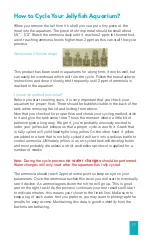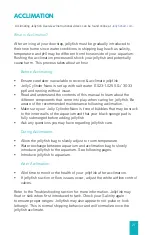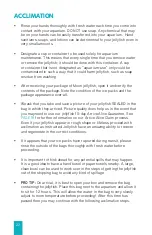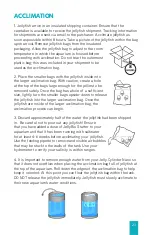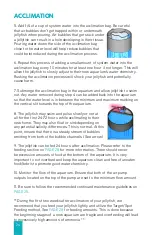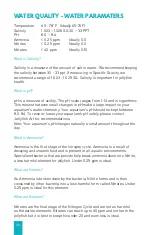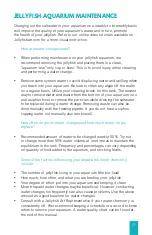
12
AQUARIUM SCIENCE 101
Your guide to success!
The species of jellyfish that you will be acquiring is the Moon Jellyfish,
Aurelia aurita. Though a relatively simple species, there are components to
this animal’s biology and aquarium keeping, that in order to be successful,
you should be aware of. Our customer base ranges from advanced aquarists
of hobbyists to people who have never taken care of an aquarium before.
We have included basic information, tips, and guidelines to help people of all
skill levels enjoy jellyfish keeping.
Moon jellyfish are roughly 95% water! The health and well-being of jellyfish
relies heavily on the condition of the saltwater in which they are living.
There are several different chemical compounds and properties that play a
role in the overall health of an aquarium such as
salinity, temperature,
pH,
and the components of the nitrogen cycle, all of which are detailed in the
following pages.
The Nitrogen Cycle
Inside a properly set up aquarium, there exists a microscopic population
of beneficial nitrifying bacteria. These bacteria keep the chemical balance
of the saltwater within a safe range for your jellyfish and serve as the
biological filtration for your aquarium.
Without proper care, ammonia (NH3) from jellyfish waste and decomposing
food from overfeeding can build up to harmful levels within your aquarium.
This leads to an unhealthy environment for your jellyfish.
To maintain a balanced environment inside your aquarium, it is
important to:
• Support the growth of nitrifying bacteria that consume ammonia prior to
adding jellyfish
• Perform weekly water changes to remove nitrates from your system.
See information on how to perform proper water changes on
PAGE 25
• Feed the proper proportions

















